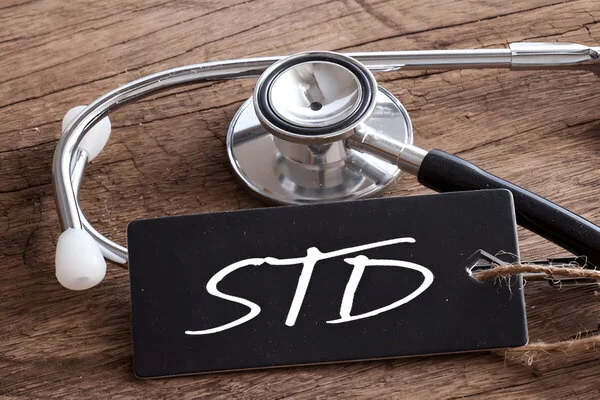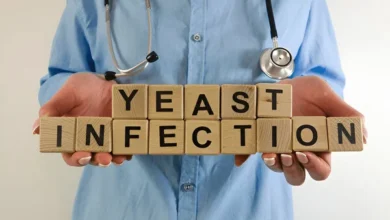The Role of Social Media in Spreading STD Awareness

In a time when digital communication is key, social media has become a powerful way to raise awareness and move public health projects forward.
Among the various critical health issues tackled through digital platforms, sexually transmitted diseases (STDs) represent a domain where social media has played an increasingly significant role.
With the number of STDs around the world going up, especially among young people, social media is a new and powerful way to teach, inform, and inspire communities to get treatment and avoid getting them.
Changing the Narrative Around STDs
One of the most important things that social media has done to raise knowledge about STDs is to challenge and change the negative stories that people tell about them.
Historically, STDs have been associated with shame and secrecy, leading many individuals to avoid testing and treatment due to fear of judgment.
Platforms like Twitter, Instagram, TikTok, and Facebook offer a space for open dialogue where influencers, healthcare professionals, and advocacy groups can normalize discussions about sexual health.
These platforms help get rid of the shame surrounding STDs by using personal stories, infographics, live Q&As, and interactive material.
Influencers with a lot of followers often talk openly about how they tested for or dealt with STDs, which can reassure others and make them feel safe enough to seek medical help.
Because content on social media goes viral, these messages can reach a lot of people, often across regional and cultural lines.
Increasing Accessibility to Information
Another big benefit of social media for raising knowledge about STDs is that it makes accurate information easy to find and share.
Traditional methods, like handouts, health classes, or doctor’s visits, may not reach as many people or happen as often.
Social media, on the other hand, gives users a steady stream of information that they can access from anywhere at any time.
The Centers for Disease Control and Prevention (CDC), the World Health Organization (WHO), and local health departments all have active social media accounts where they share up-to-date information about STD symptoms, ways to avoid getting them, and testing choices.
Hashtags have been used by campaigns like #GetTested and #TalkTestTreat to group and spread content, making it easier for users to find and interact with trustworthy sources.
Visual material like memes, short videos, and animated graphics can also make complicated medical information easier to understand, especially for young people who are more likely to get an STD.
This method makes sure that people not only see important messages, but also understand them and remember them.
Promoting Testing and Prevention Campaigns
A big part of spreading the word about STD testing and prevention efforts is also social media.
Health organizations and community groups often use platforms to let people know about free testing events, give out testing kits that can be used at home, and teach people about safe sex practices.
Because social media is instant, it’s easy to post updates and reminders at the right time, which raises knowledge and participation.
Targeted advertising and geotagging make these efforts more accurate, making sure that the right messages get to the right people.
For example, a local health department might use Facebook ads to tell people in a certain age group and area about a free STD screening event.
Working with celebrities and people with a lot of impact can also help these projects get a lot more attention and credibility.
When a well-known and popular person supports STD testing, it can change how people think and act, especially younger people who are very affected by social media trends.
Encouraging Open Dialogue and Peer Support
One of the best things about social media is that it can bring people together and help each other.
People can ask questions, share their stories, and help others who are going through the same things in online forums, discussion groups, and comment sections.
People who live with chronic STDs like HIV or herpes may feel alone or judged in their real lives, so this sense of community can be especially helpful for them.
It’s easy to make helpful networks on social media, where people can find support, understanding, and useful information.
Hashtags like #HIVAwareness and #HerpesPositive help people who are going through the same things connect with each other, which reduces feelings of separation and improves mental health.
Combating Misinformation
There are many good things about social media, but there are also some bad things, especially when it comes to spreading false information.
Giving people wrong or misleading information about how to get an STD, its signs, or how to treat it can be confusing and hurtful.
This is why it’s important for trustworthy health groups and professionals to stay active online to bust myths and give advice based on facts.
Fact-checking projects and working together with social media companies have been very helpful in the fight against false information.
Social media sites like Facebook and Twitter have added tools to report or get rid of fake health information.
They also promote content from reliable sources. Educational content makers and influencers are very important to this ecosystem because they bust myths and point their followers to reliable sources of information.
Leveraging Influencers and Digital Creators
The rise of health influencers and digital creators has changed how health information, like knowledge about STDs, is shared.
People who are like this often have a small group of people who trust their views and content. Influencers can have a big effect on how people think and act when they talk about preventing STDs, share how they get tested, or support sexual health products.
Campaigns that work with influencers to raise awareness about STDs can be especially successful if the messages are real and fit with the influencer’s brand.
For example, a lifestyle vlogger who talks a lot about relationships and health might easily add content about safe sex practices.
This would help them connect with their audience in a way that is relatable and not scary.
Future Directions and Innovations
As time goes on, social media will change how it helps people learn about STDs. Using AI and machine learning together could make health messages more personalized.
Also, virtual reality and augmented reality could be used to teach people about sexual health in a more engaging way.
Also, apps like TikTok are becoming more and more popular among Gen Z users. This opens up new chances to make creative and interesting content that appeals to younger audiences.
Videos that are short and catchy and give quick health tips or bust common myths can go popular very quickly. This makes learning fun and effective.
Health tech companies are also looking into robots and mobile apps that are connected to social media sites so they can offer help and information in real time.
People can use these tools to find clinics close, use symptom checkers, or even get in touch with healthcare providers.
Conclusion
Social media plays many different roles in raising knowledge about STDs, and these roles are always growing.
Social media has become an important tool for public health because it helps break down stigma, improves access to correct information, promotes testing, and fosters open communication.
As technology improves and social media sites become more a part of our daily lives, it will be important to use their power in a smart and responsible way to fight the STD problem.
The challenge is not only getting the word out, but also creating an open, supportive, and proactive health management culture in the digital places where people spend a lot of time.
Delta Fitness Authority




